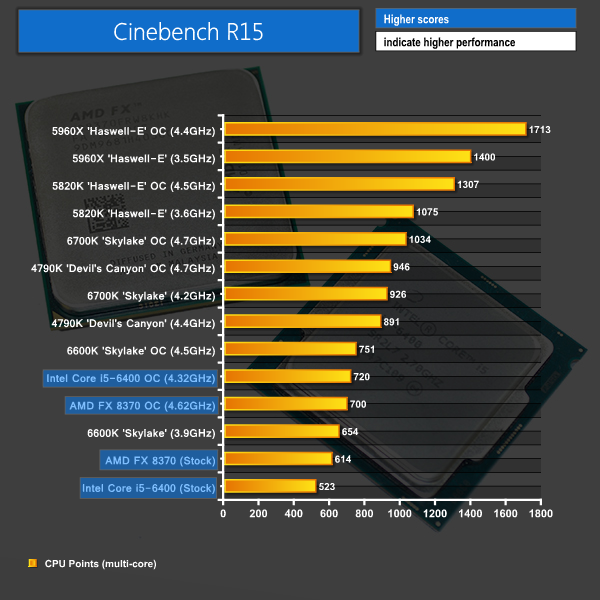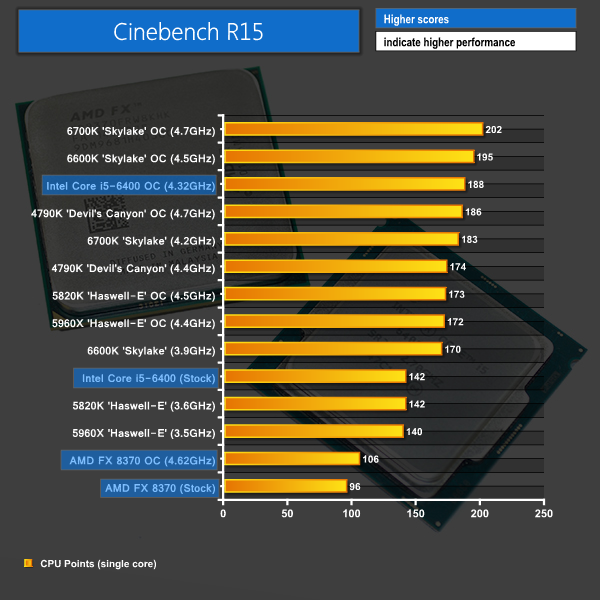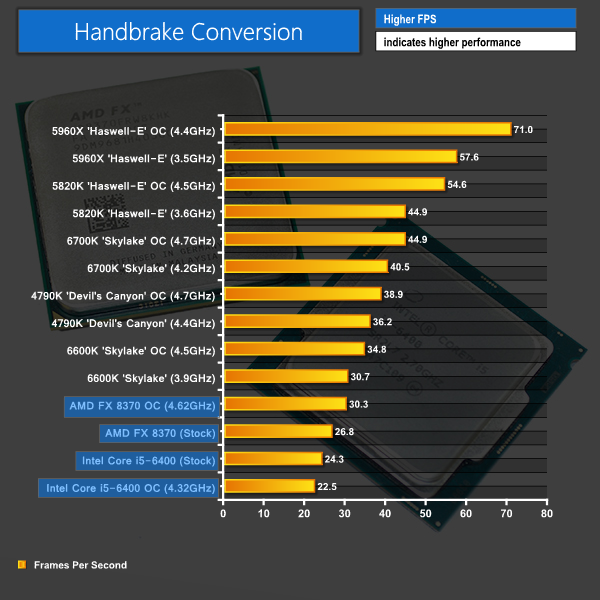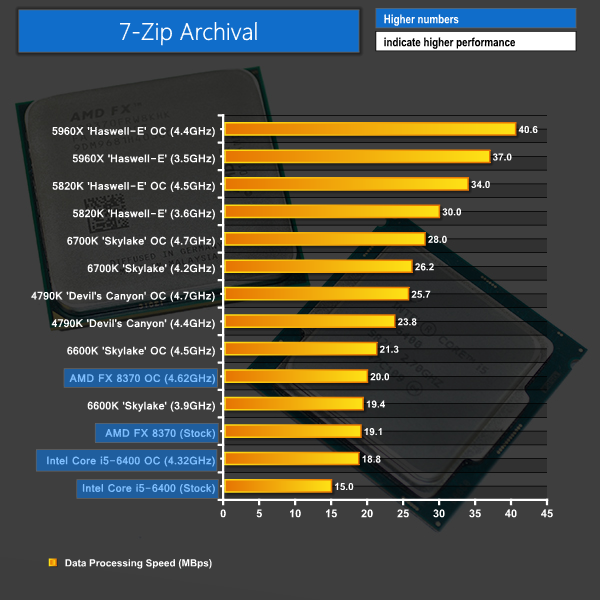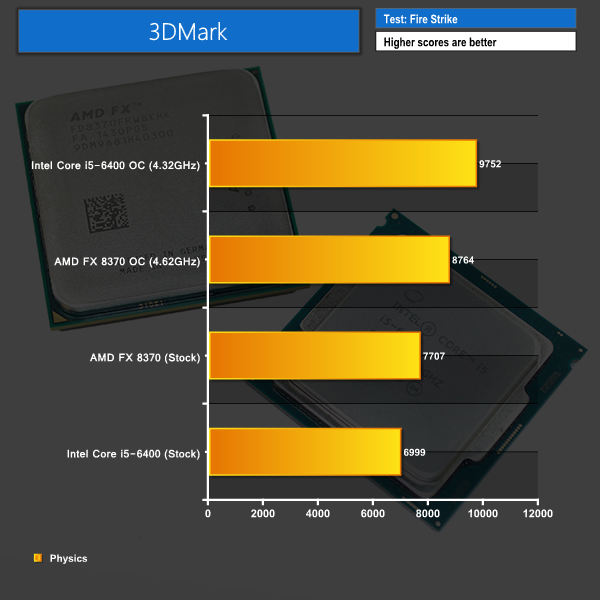Cinebench
We used the ‘CPU’ test built into Cinebench R15 .
AMD's octa-core chip is able to leverage its multi-threaded design and significantly higher clock speed to comfortably outpace Intel's Core i5-6400 before overclocking. But that's only true for the multi-threaded Cinebench test; single-threaded performance from the Skylake architecture is vastly superior to that of AMD's Piledriver-based cores.
The performance margin between each overclocked configuration is relatively small for the multi-threaded workload. Both chips are able to outpace a 3.9GHz Core i5-6600K when their clock speeds are boosted, however Intel's Hyper-Threaded Core i7 parts are well ahead of the ~£150 offerings.
The sheer level of performance offered by the underlying Skylake architecture boosts the overclocked Core i5-6400 to third-place in our single-core Cinebench testing, beating a 4.4GHz 5960X and 4.7GHz 4790K along the way. A speed bump for AMD's FX 8370 allows it to break the 100 point barrier, however its single-core performance is way off that of Intel's recent offerings.
A quick verdict here suggests that Intel's Core i5-6400 is clearly superior to AMD's FX 8370 when the workload is single- or lightly-threaded. But when there is enough demand to put the Vishera chip's eight cores to work, it takes a sizeable overclock on the Core i5-6400 for the processor to offset its lower core count.
Handbrake Conversion
We measured the average frame rate achieved for a task of converting a 1.23GB 1080P game recording using the High Profile setting and MP4 container.
Video conversion is one of the primary drivers for wanting a processor with bags of multi-threaded performance. And that's what is shown from our test data. The 8-core AMD chip is able to outperform the stock-clocked i5-6400, despite its evident IPC disadvantage. When the FX 8370's clock speed is pushed to 4.62GHz, the chip is actually able to compete with a 3.9GHz Core i5-6600K.
While the stock-clocked i5-6400 is outdone by AMD's Vishera part at its reference speed, the deficit is only 10%. Oddly enough, performance actually drops when the BCLK overclock pushes the i5's CPU speed to 4.32GHz.
This seems to be one of the negative quirks attached to this ‘workaround' method of overclocking. AVX performance is suggested to be severely harmed by the BCLK overclocking process, and that seems to be what is happening with the Handbrake workload.
If video conversion using Handbrake is important to you, as it is for many users who rip their DVDs and Blu-rays to a home media server, the FX 8370 looks to be a strong choice.
7-Zip
We manually archive a 1.23GB MP4 game recording to test the performance in 7-Zip.
File archival is another real-world task that can stress a large number of cores. The parallel workload of archiving a video file using 7-Zip seems to care for a mixture of IPC, cores, and clock speed.
AMD's 8-core chip leads the way with file archival, but the margin of its performance lead is narrowed when a hefty overclock is applied to Intel's Skylake quad core.
3DMark
We used 3DMark‘s ‘Fire Strike’ benchmark which is designed to be used on gaming PCs.
3DMark's Physics score is a quick and easy method of gauging the CPU's capability in modern gaming titles.
The sheer number of cores on offer by AMD's FX 8370 allows it to outperform the stock-clocked i5-6400 quad core. Turn on the afterburners for Intel's chip and even the overclocked Vishera part simply cannot match the Physics performance of a 4.32GHz Skylake Core i5-6400.
A quick-and-dirty CPU comparison can be somewhat generalised by stating that a sizeable frequency boost brought about by overclocking is generally sufficient for Intel's Skylake quad core to offset its 4-core deficit in comparison to AMD's FX 8370. As our analysis and charts have highlighted, there's more to it than that, and the landscape varies depending on the workload, but it's a relatively straightforward way of making an on-the-fly comparison between these two processors.
 KitGuru KitGuru.net – Tech News | Hardware News | Hardware Reviews | IOS | Mobile | Gaming | Graphics Cards
KitGuru KitGuru.net – Tech News | Hardware News | Hardware Reviews | IOS | Mobile | Gaming | Graphics Cards


